
|
Heat: An Idle Gallery by Richard L. Howey, Wyoming, USA |
In Laramie, it is summer. We had an unusually cold and dreary winter, so the warmth of summer should be welcome. For me and many of my friends and acquaintances, it isn’t. When it gets much above 70 degrees F., my brain starts to melt; I feel lethargic, lazy, indolent, unmotivated, unfocused, and unproductive. My wife tells me it’s because I’m compulsive and have never learned how to relax and enjoy idleness. She’s right, of course but, at this late stage of my life, I’m very unlikely to change. Beside, there are those studies out of Sweden on the relationship of temperature to creative intellection or cognition; above 70 F., there is a significant decline. When I read that I felt vindicated. I have long contended that heat is the primary reason why there are so few philosophers from the tropics.
People say that we shouldn’t be too much affected since we have very dry heat. I remind them that we live 7,200 feet closer to the sun than the seashore dwellers and that there is a fierce intensity in the sunlight and a very significant increase in ultraviolet radiation. My wife and I have never had air-conditioning and, on the second floor of our house, where my microscopes and computers are, it has been getting up into the high 80s and even low 90s. It used to be that 70 F. was considered to be very, very hot but, in the last decade and a half, the summer temperatures have been steadily reaching higher readings for longer periods. As a consequence, I am a firm believer in global climate change, man-made or not. I haven’t yet been able to bring myself to invest in air-conditioning but, as I age, I become more vulnerable to such a compromise.
All of this is by way of justifying this essay which consists of 24 images and minimal comment. I have a number of essays which I’m working on, but it has been too hot for me either to finish the writing or take the necessary images to document them. So, lazy lout that I am, I went through a series of images that I took earlier this year and decided to put them together as a summer recreation. Most of the images involve some optical enhancement and 2 of them involve a bit of computer magic. I’ll number the images and then make a few brief comments about each. It would be helpful to me, if you were to tell me which ones you especially like.
1) An interesting chunk of coral which seem to be growing out in all directions.

2) A bristle worm with golden-copper bristles, the tips of which are pointed like spears.

3) and 4) For a special occasion, my wife gave me a selection of six 19th Century slides made by J.T. Norman. This one is of tiny oysters and I’ll show you both the slide ring and a close–up.


5) Spicules isolated from a sea cucumber of the genus Chirodota from the Philippines.

6) A living specimen of the ciliate Climacostomum virens photographed using Nomarski Differential Interference Contrast which clearly shows the long, curved macronucleus and the ciliary band around the cytostome (mouth).
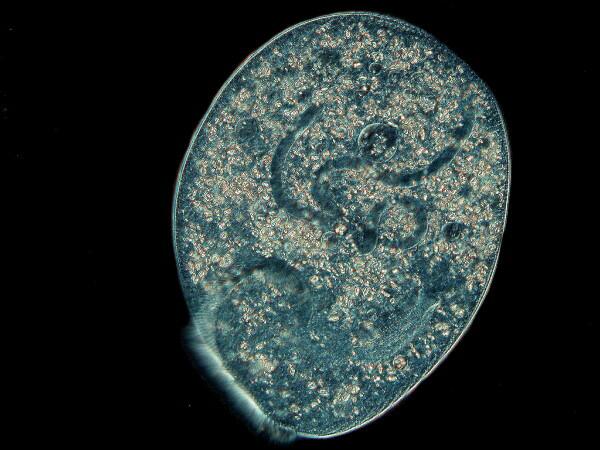
7) A marvelous tropical beetle from Sumatra, Indonesia, Cyclommatus cuperonitens, which looks as though it had been cast in metal.

8) and 9) Another slide made by Norman; this time a diatom strew of the diatom Stauroneis. I will show you first a section of the strew using oblique illumination and then a close up of an individual specimen using Nomarski DIC.

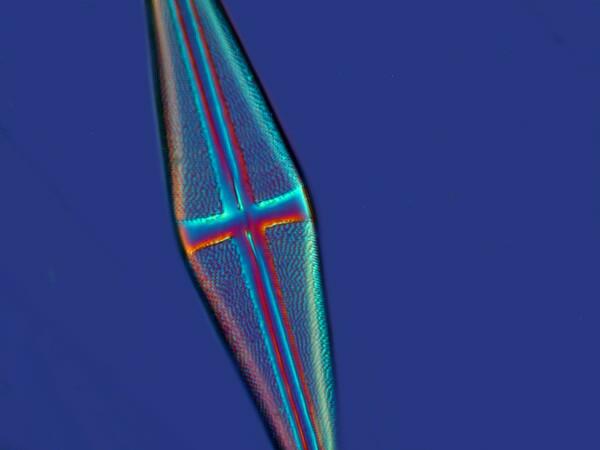
10) Moving to the wonderful world of algae, we can see the fascinating coil inside a segment of Spirogyra.

11) The world of biological stains has long fascinated me and here is an image taken with polarized light of a Trichrome stain which can be used both for whole micro-organisms and for tissue sections.
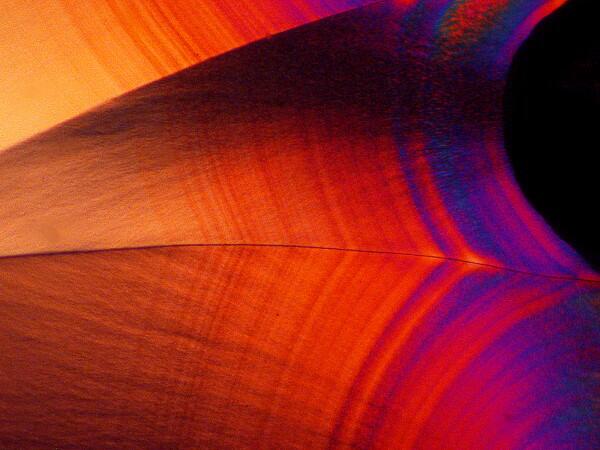
12) I love the geometric character of many types of spicules. Here is an example of one from a glass sponge.

13) Here’s a view of another kind of bristle worm from the underside; this is a sort of “fuzzy” bristle worm, but probably not one you’d want to pet or have as a pet.

14) Is it a bird? Is it a plane? Is it Superman? Is it a starfish? One might well think that it is the latter, but it’s actually a diatom.
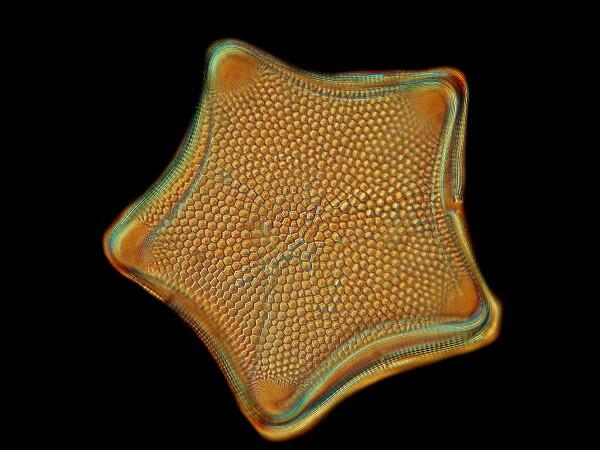
15) You want a starfish? Well, here’s an itsy-bitsy, tiny one.
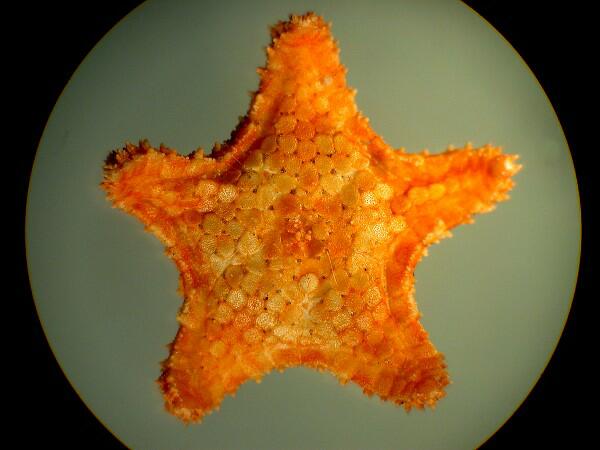
16) Diatoms are so pleasing in large part because of their geometric character and when they form aggregates, they often get even more interesting.
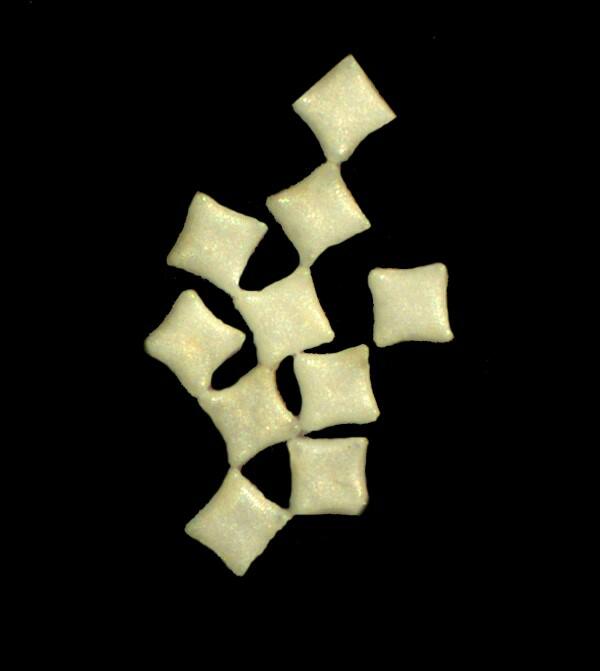
17) When you mix certain sorts of things together (cautiously and knowledgeably, I would advise), you can sometimes get some very striking results especially when viewed with polarized light. The crystal below is the result of a mixture of magnesium chloride and, would you believe it, Elmer’s Gel Glue!
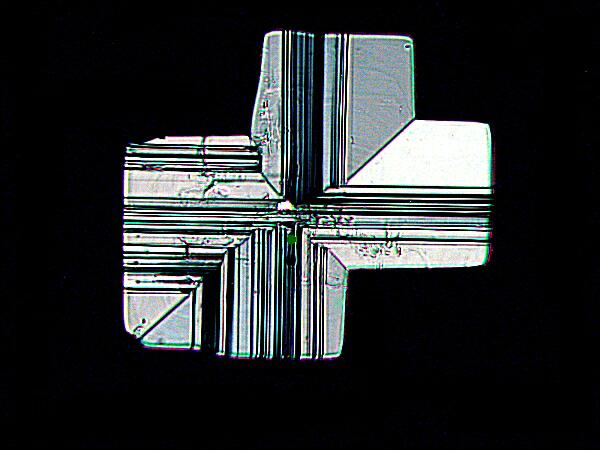
18) Sometimes substances derived from nature will provide intriguing crystalline results as in the case of the natural sweetener, Truvia, see below.
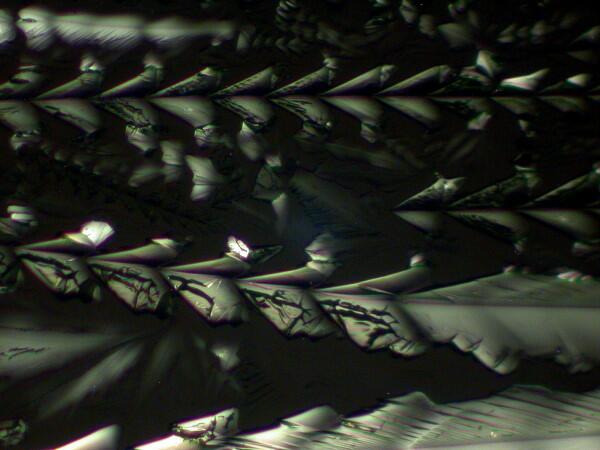
19) Combining an extract from nature, such as Ascorbic acid (Vitamin C) with a bit of “raw” nature can be dazzling; in this case, a tiny fragment of the calcareous skeleton of a bryozoan.
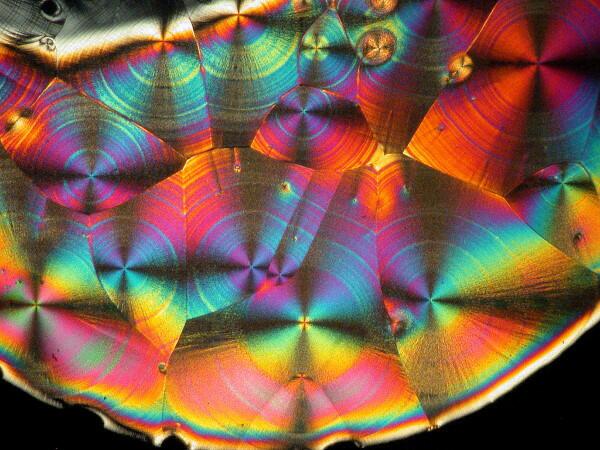
20) Nature is full of amazing little surprises. Below is an image of cross sections of spines of 2 different species of sea urchins photographed using polarized light.
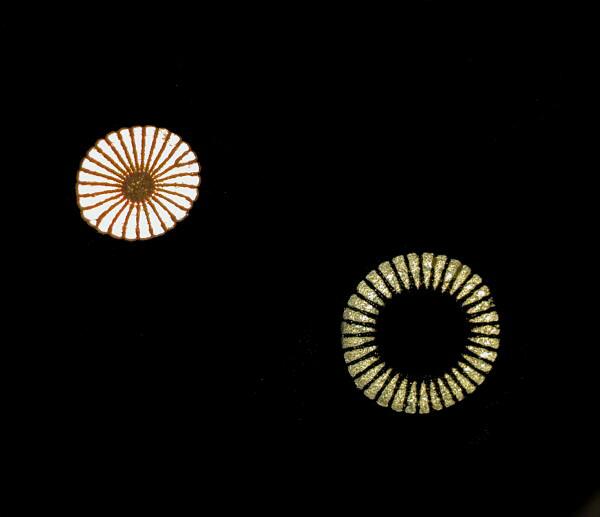
Human ingenuity is also full of little surprises and technologies sometimes allow us to achieve marvelous things. Computer graphics software permits us to transform something quite remarkable in itself into something visually quite different but, nonetheless, striking. I want to conclude by showing you 2 such examples using 2 different kinds of beetles.
21) and 22) This is Dichronorhina derbyana oberthueri, one of the rhinoceros beetles, from Usambarae, Tanzania and he is, to my mind, quite an impressive chap.
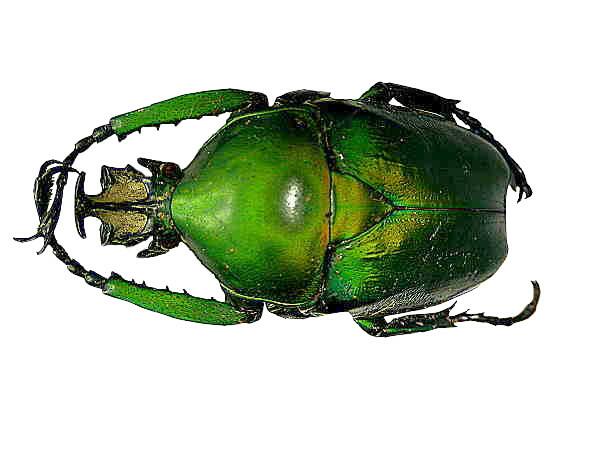
Using a few software tricks, he takes on the appearance of a centuries old drawing and I can easily imagine him being drawn and colored by Albrecht Dürer.
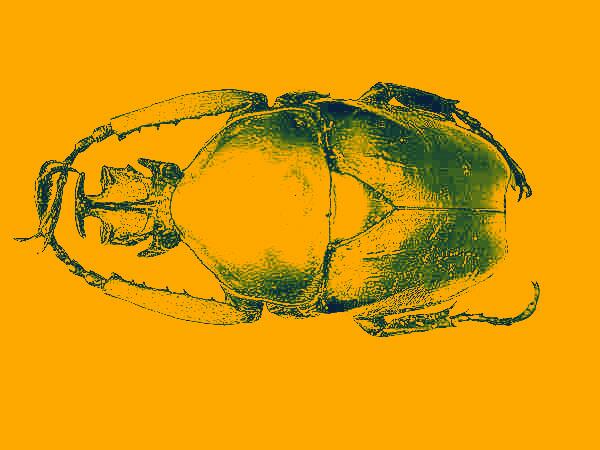
23) and 24) This is Homoderus mellyi, one of the stag beetles, from Cameroon, Africa. As you can see, he has a very impressive set of jaws.
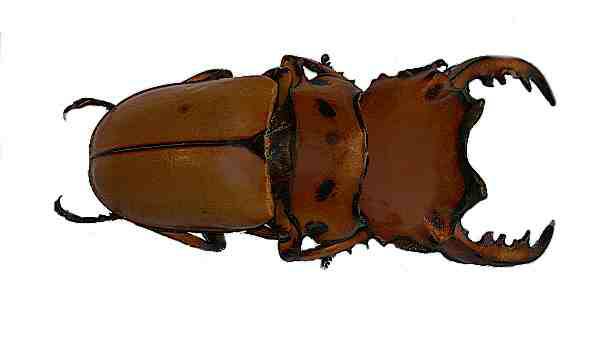
Again, using a bit of computer magic, and, in this case, we might imagine someone passionate about cutting-edge technology, transmogrifying our splendid stag beetle into a robo-beetle.
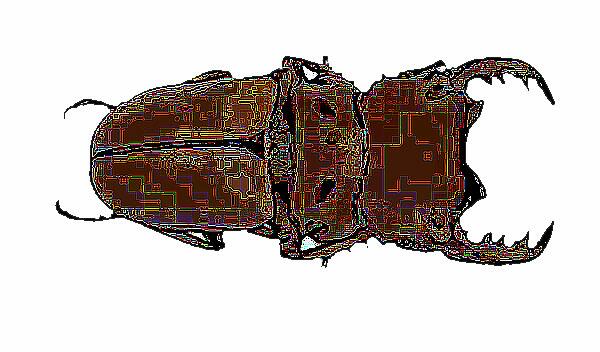
I look at this image and think of it as a kind of map of the circuitry that allows this incredible creature to perform all the functions it does.
I hope you’ve found a bit of pleasure in my quest for a respite from the heat.
All comments to the author Richard Howey are welcomed.
Editor's note: Visit Richard Howey's new website at http://rhowey.googlepages.com/home where he plans to share aspects of his wide interests.
Microscopy UK Front
Page
Micscape
Magazine
Article
Library
Please report any Web problems or offer general comments to the Micscape Editor .
Micscape is the on-line monthly magazine of the Microscopy UK website at Microscopy-UK .